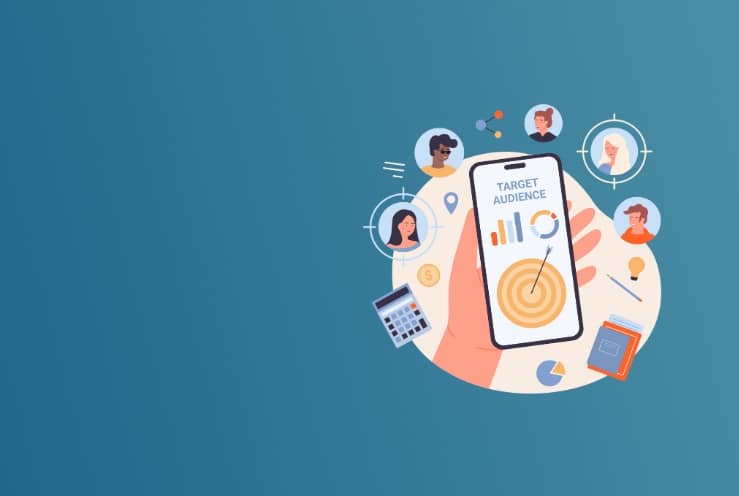
Customer-Centric Approach: 5 Ways to Utilize Texting for Customer Segmentation
At Textellent, we understand the importance of a customer-centric approach and how it can drive success for your business. One of the key strategies to achieving this is through effective customer segmentation using texting. In this article, we’ll explore five powerful ways to utilize texting for customer segmentation (use this link instead https://textellent.com/products/next-generation-segmentation-tools-offer-a-new-level-of-rich-audience-targeting/) , helping you tailor your marketing efforts to individual preferences and needs.
How Segmentation Can be Utilized

At Textellent, we believe that personalization is the cornerstone of effective customer segmentation. Gone are the days of generic, one-size-fits-all messages. Instead, leverage the power of texting to send highly personalized messages to your customers. Segmentation approaches have gotten very sophisticated in today’s marketing environment.
Textellent has a very robust and extensive way to identify various segments to which a customer might belong. For example a segment or a tag might be created for a prospect that submitted an inquiry from a web form indicating a particular product of interest or maybe they texted in a keyword or attended a specific event. Segments and tags can be applied by a staff member to indicate the sales stage that a prospect may belong to or they might identify a customer as a VIP or at risk. The ways prospects and customers can be identified by segments is endless. Segments and tags can be sync’d with those used in a CRM system or other software solution using integration.
Personalize Messages Based on Segments
Start by collecting existing prospect and customer data, such as purchase history, preferences, sales stage and geographic location, etc. Unlimited tags can be applied as appropriate. Then, use this information to craft tailored messages that resonate with each segment of your audience. Textellent allows you to send a given message to multiple tags at once, while suppressing others. For example, a home care business might want to find an employee who can serve a particular client who needs a caregiver that speaks spanish, will work the night shift, works on the west side of the city, but isn’t an RN. This can easily be handled and allows messages to be very fine-tuned to result in the best response.
Personalization not only increases engagement but also fosters a deeper connection with your company and your employees so they know when they receive a message it is most likely something very relevant to them. When customers receive messages that directly address their interests and needs, they are more likely to pay attention and take action. Another example might be, if you run an online clothing store, you can segment your audience into categories like men, women, or children and further segment by their previous interest in shoes, jackets, etc., and whether this is an existing customer and so on. Then, send promotions and product recommendations that specifically appeal to that audience. By doing so, you enhance the customer experience and drive higher conversion rates.
Behavioral Triggers
Understanding customer behavior is crucial for segmentation. Tracking customer interactions with your brand can provide valuable insights. You can further set up segments based on actions the customer did or did not take, such as an abandoned shopping cart.
For instance, if a customer abandons their cart, send a timely text with a special discount code to encourage them to complete the purchase. By reacting to real-time behavior, you can create more relevant and timely interactions. This not only increases the chances of converting a lead into a customer but also demonstrates that your brand is attentive and responsive to customer needs.
Preference Surveys
Conduct preference surveys through text messages to gain insights into the likes, dislikes, and expectations of your customers. Ask open-ended questions and offer incentives for participation, such as exclusive discounts or access to VIP events. Analyze the responses to segment your customers based on their preferences.
This approach ensures that you’re aligning your messaging with what your customers truly want. For example, a restaurant can send out a survey asking customers about their favorite types of cuisine. Based on the responses, they can segment their audience into groups like Italian food lovers, Mexican food enthusiasts, and vegetarian diners. This allows the restaurant to send targeted offers and menu updates to each group, increasing customer satisfaction and loyalty.
Opt-In Campaigns
Respecting your customers’ preferences is paramount in a customer-centric approach. We recommend implementing opt-in campaigns to ensure that your audience receives messages they actually want. Encourage customers to opt in for specific “text-only” updates or promotions.
This way, you can segment your list into different categories, such as product updates, exclusive offers, or news and events. By respecting their choices, you’ll build trust and improve the overall customer experience. When customers have control over the content they receive, they are more likely to engage with your messages and view your brand positively.
Lifecycle Stages
Recognizing where your customers are in their journey with your brand is vital for effective segmentation. We advocate for segmenting customers based on their lifecycle stages. Whether they’re new prospects, first-time buyers, or loyal repeat customers, tailor your messaging to suit their current position in the customer journey.
New prospects might benefit from introductory offers, while loyal customers could receive rewards and exclusive previews of new products. For instance, a fitness company can segment its users into categories like beginners, intermediate, and advanced. Beginners might receive tips on getting started, while advanced users could get information on advanced workouts and nutrition plans. This targeted approach keeps customers engaged and motivated, which is key to customer retention and long-term success.
A customer-centric approach is essential for businesses aiming to build lasting relationships with their audience. Effective customer segmentation is the key to achieving this goal, and texting can be a powerful tool in your arsenal. We at Textellent believe that by implementing p
Segmentation strategies with personalized messaging, leveraging behavioral triggers, conducting preference surveys, respecting opt-in preferences, and considering lifecycle stages, you can unlock the true potential of texting for customer segmentation.
Incorporating these strategies into your texting campaigns will not only improve your customer segmentation but also enhance your overall marketing efforts. Remember, the success of your business is closely tied to your ability to connect with and cater to your customers’ individual needs and preferences. Texting provides a direct and personal channel to achieve just that.
At Textellent, we are committed to helping businesses like yours excel in customer engagement through-out the customer life cycle with our cutting-edge texting solutions. Contact us today to learn more about how Textellent can assist you in implementing these customer-centric strategies and taking your marketing to the next level. Together, we can create a customer experience that drives loyalty and boosts your bottom line. By harnessing the power of texting for customer segmentation, you can build stronger customer relationships, drive conversions, and ultimately, achieve long-term success for your business.





